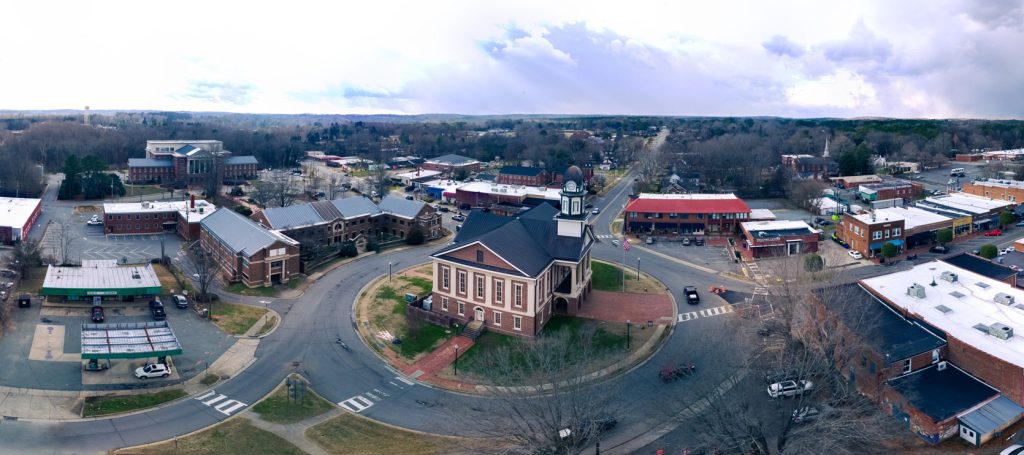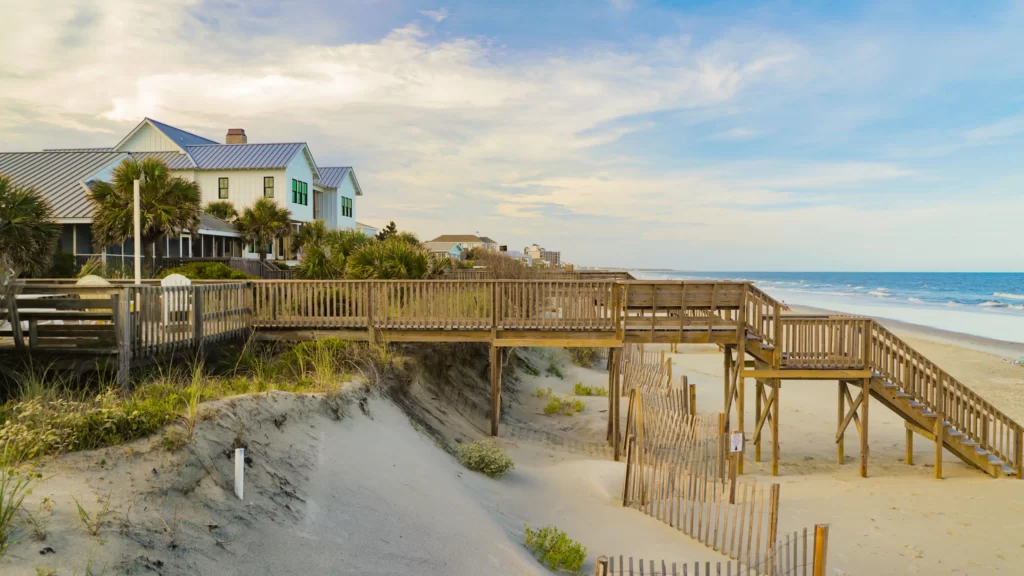HOA Management in Pittsboro, Nc
Pittsboro, North Carolina, or the Town of Pittsboro, is located in Chatham County. Pittsboro is Chatham County’s county seat. Pittsboro is west of Raleigh and south of Chapel Hill. Pittsboro, once known as Pittsborough, was the first town formed in Chatham County and the county seat since 1787. The name Pittsboro was in honor of the British prime minister William Pitt, the younger. Pitt, at the age of 24, was the youngest prime minister in English history.
Pittsboro’s population per the U.S. Census in 1900 was 424. The 2019 estimated Pittsboro population per the U.S. Census was 4,368. Chatham County’s U.S. Census population in 1790 was 9,161. The estimated Chatham County population for 2019 was 74,470. Chatham County and Pittsboro are part of the Durham-Chapel Hill, NC Metropolitan Statistical Area, which is also included in the Raleigh-Durham-Chapel Hill Combined Statistical Area, which has a population of 2,156,253 as of the U.S. Census 2020 Population Estimates. The zip codes are 27228 and 27312. The area code is 919.
Chatham County is located in the Piedmont region of North Carolina. Neighboring Orange County was reduced in size on April 1, 1771, one of the new counties formed was Chatham County. At this time, counties in North Carolina were being reduced in size to better accommodate the population. The main benefit of these smaller counties was the reduction in the difficulty and expense of travel to the county seat and sometimes this happened to be the seat of commerce.
The name Chatham comes from the British Prime Minister William Pitt the Elder, 1st Earl of Chatham. William Pitt the Elder was known for his liberal policies and views of the American colonies, for example, his support of the repeal of the American Stamp Act. His actions endeared him to many American colonists, and may account for the new county being named in his honor. Areas of Chatham County and Moore County were combined in 1907 to create Lee County.
After the 1720s, the native American tribes in the Chatham County area had died off due to warfare with other Indian tribes or conflicts with the European settlers. Many native Americans, not having immunity from European diseases, eventually succumbed to those diseases. A small number of these Indians migrated to other areas to escape conflicts with the settlers and other warring Indian tribes.
The first recorded inhabitants of the area were members of the Occaneechi, Shoccoree, and Eno Native American tribes. John Lawson (December 27, 1674 – September 16, 1711), was the first English explorer of the Carolina backcountry who recorded his encounter with these native Americans in what is now Orange County. While traversing the Great Trading Path in 1701, Lawson came upon an Occaneechi village. He called this village Achonechy in his book, A New Voyage to Carolina. From John Lawson’s journal, “Their Cabins were hung with a good sort of Tapestry, as fat Bear, and barbakued or dried Venison; no Indians having greater Plenty of Provisions than these.” Lawson left the Occaneechi village and traveled to a village of Shoccoree and Eno Indians. He called the village Adshusheer in his journal. This village was located on the Eno River around 14 miles east of the Occaneechi village, near present-day Hillsborough.

The declining Indian population of what would become Chatham County was slowly replaced with European settlers, many being Quakers from England. An English Quaker settlement was formed in 1751 in the western part of Chatham County in what is now known as Siler City. Going into the late 1740s, the pace of immigrating Europeans increased with more Scotch-Irish and German settlers. During this period and for many decades to come these European settlers arrived from Philadelphia via the “Great Wagon Road.” European settlers in the area during this time period also arrived from the southeast, from the Cape Fear River valley. These European settlers primarily pursued agriculture cultivation and agriculture- related enterprises.
The town of Moncure, located less than 10 miles southeast of Pittsboro, was once the westernmost inland port in North Carolina. Moncure is where the confluence of the Deep and Haw rivers form the Cape Fear River. At one time ships would navigate the Cape Fear all the way to the Atlantic Ocean. During the colonial period, this was a principal transportation method into and out of the North Carolina backcountry.
The Chatham Courthouse was built in 1778 and Pittsboro became the county seat. Before Pittsboro became the current name, the town/area was known as “Chatham Court House” until 1785. In that year, an act was passed forming the town of Pittsborough on the land where the courthouse was located.
Pittsboro became an early cradle of learning in the late 1800s. The Pittsborough Academy was founded in 1787 and became a leading school in the area. There were other private academies and girl’s schools established during this period. Churches in the community also provided schools for children. St. James Episcopal Church was the first to open a school for African Americans.
A minor engagement during the American Revolution took place at the Chatham Courthouse. Patriot leaders placed several Loyalist leaders on trial. Upon conclusion of the trial on July 17, 1781, the Loyalist leaders were sentenced to death. Loyalist leader Colonel David Fanning learning of the trial rushed his men to Chatham Courthouse to confront the Patriots. Fanning’s men circled the courthouse and took 53 Patriot prisoners. One of the prisoners being a large Chatham County landowner and famous North Carolina Patriot, Colonel Ambrose Ramsey. Colonel Fanning was a famous American board Loyalist leader who took part in 36 skirmishes, who after the American victory had to flee the United States.
Pittsboro received its first US Post Office on April 1, 1796. The first postmaster was Mial Scarlock.
Agriculture was the early economic driver for Pittsboro and the surrounding area. While tobacco and cotton were grown, corn was what was cultivated by a large percentage of farmers. Tobacco could be much more profitable, however, the transportation costs and potential spoilage could be problematic to growers. Just before the American Civil War manufacturing was slowly making an appearance around Pittsboro. Textile manufacturing and related enterprises within Chatham County increased drastically after the American Civil War with the abundance of inexpensive hydropower and labor.
Large plantations found in some areas of the state were not that prevalent around Pittsboro and Chatham County. Most agriculture activities were limited to many small farms. Nonetheless, a large percentage of the county’s population were enslaved African Americans. Of the 19,101-total population from the 1960 Chatham County U.S. Census, one-third were enslaved African Americans.
The town of Pittsboro escaped much of the devastation that Union General William Tecumseh Sherman’s troops wreaked on other towns in the area at the end of the American Civil War. This was primarily due to flooding on the Haw River which prevented Union soldiers from crossing. In line with the general sentiment of most North Carolinians, the population of Pittsboro and Chatham County were reluctant in their support of secession from the Union. One-fifth of the men from Chatham County who enlisted in the Confederate army perished during the war.
An elected five-member county commission system was put into place in 1868 as a result of Reconstruction and the new North Carolina State Constitution. At the same time, Chatham County was subdivided into townships. The Pittsboro court was reformed to be in line with Reconstruction and the new State Constitution requirements.

During the Reconstruction era, discrimination and violence against freed African Americans were prevalent. Shortly after Reconstruction ended in 1877 this violence escalated to the point of lynchings. There was an infamous quadruple lynching on September 29, 1885, in Pittsboro. A mob of 50 to 100 people stormed the county jail and hanged Jerry Finch, Harriet Finch, Lee Tyson, and John Pattishall. There was some consolation in how the overall population responded in their outrage of these four murders. Newspaper reports and opinion pieces of the time universally condemned this mob’s behavior and demanded justice for these four murder victims.
The Civil War, as it did in many areas of the country, interrupted commerce and brought a stop to business development within Pittsboro. However, the economy slowly recovered, and Pittsboro returned to the center of commerce in Chatham County. Probably the single most important economic driver after the Civil War was the completion of the Pittsboro Railroad line to Raleigh in 1886. The rail line allowed for the shipping of agriculture products and manufactured products to new markets.
Agriculture still plays a role in the economy of Chatham County, manufacturing, and especially textiles have declined steadily since the beginning of the 20th century. The economy in the last twenty years has moved more towards a bedroom community or commuter based community. Better roads and housing costs in surrounding counties have led to many Chatham County residents working elsewhere.
The main driver of this commuter growth in Pittsboro and Chatham County, and for the rest of the area, is the Research Triangle Park (RTP). The major economic driver for the entire region is the Research Triangle Park. The “Triangle” in Research Triangle Park stems from the three leading research universities in the region, Duke University, North Carolina State University, and the University of North Carolina at Chapel Hill. When the three university locations are connected, they form this triangle.
The Research Triangle Park is the largest research park in the United States. RTP is home to more than 200 global companies including SAS Institute, Verizon, Siemens Medical Solutions USA, Met Life, ABB, Inc., HCL American, American Airlines, and Apple.
RTP can trace its origins back to just after World War II and the need for North Carolina to reinvent itself to survive the new economy. After the war, North Carolina was not ideally suited to prosper with the prior economic system that was in place before the war. These traditional economic systems of this primarily rural state were dependent upon textiles and agriculture.
Colleges in North Carolina were overflowing with students gaining advanced educations in the 1950s. Thus, the colleges were graduating a higher level of educated worker and the state business environment needed to reinvent itself and attract new businesses to hire these workers.
Academics from NCSU, Duke, and UNC realized that the recent technological innovations and the modernization that was taking place was going to alter the economy and workforce within the state. In 1959, North Carolina State University and Duke University academics worked together and developed the concept of a “park” so both universities could perform research together.
Census Pop. %±
Historical population Per U.S. Census
1910 502 18.4%
1920 584 16.3%
1930 675 15.6%
1940 826 22.4%
1950 1,094 32.4%
1960 1,215 11.1%
1970 1,447 19.1%
Population under 18 years: 24.6%
1990 1,436 7.8%
2000 2,226 55.0%
2010 3,743 68.1%
2019 (est.) 4,368 16.7%
Roads & Highways
The main roads in Pittsboro are US 15-501, and US 64.
Pittsboro to Raleigh, NC (32 Miles), Durham, NC (28 Miles), Chapel Hill, NC (17 Miles), Charlotte (107 Miles), and Washington, DC (288 Miles).

Pittsboro is 26 miles from Raleigh-Durham International Airport (RDU). The following airlines serve Raleigh-Durham: Air Canada Express, Alaska Airlines, Allegiant Air, American Airlines, American Eagle, Delta Air Lines, Delta Connection, Frontier Airlines, JetBlue, Southwest Airlines, Spirit Airlines, Sun Country Airlines, United Airlines, and United Express. Pittsboro does not have an Amtrak station, however, nearby Cary, NC does have an Amtrak station with regular service.
The Pittsboro schools are well-rated from primary to secondary. There are 11 top-ranked colleges or universities in the Pittsboro area with the majority having collegiate sports programs.
Need Association Management?
Contact Us
How to Start
The Process of Working With Us


REQUEST A PROPOSAL
Request a proposal online or call us directly.


WE WILL REVIEW YOUR CASE
Our team of highly trained professionals will review your case.


RECEIVE A CUSTOM TAILORED PLAN
We will create a customized management plan for your community.


SEAMLESS TRANSITION
We will implement a seamless management transition and integrate our tech.


SIT BACK & RELAX
Enjoy better, affordable and a more reliable, hassle-free management system.




